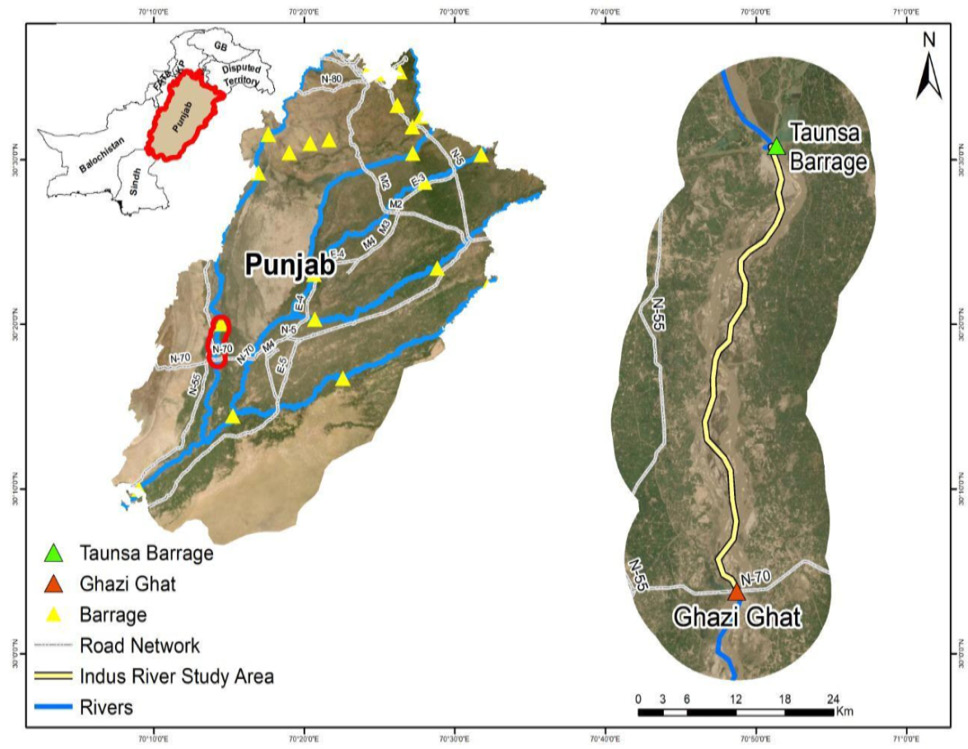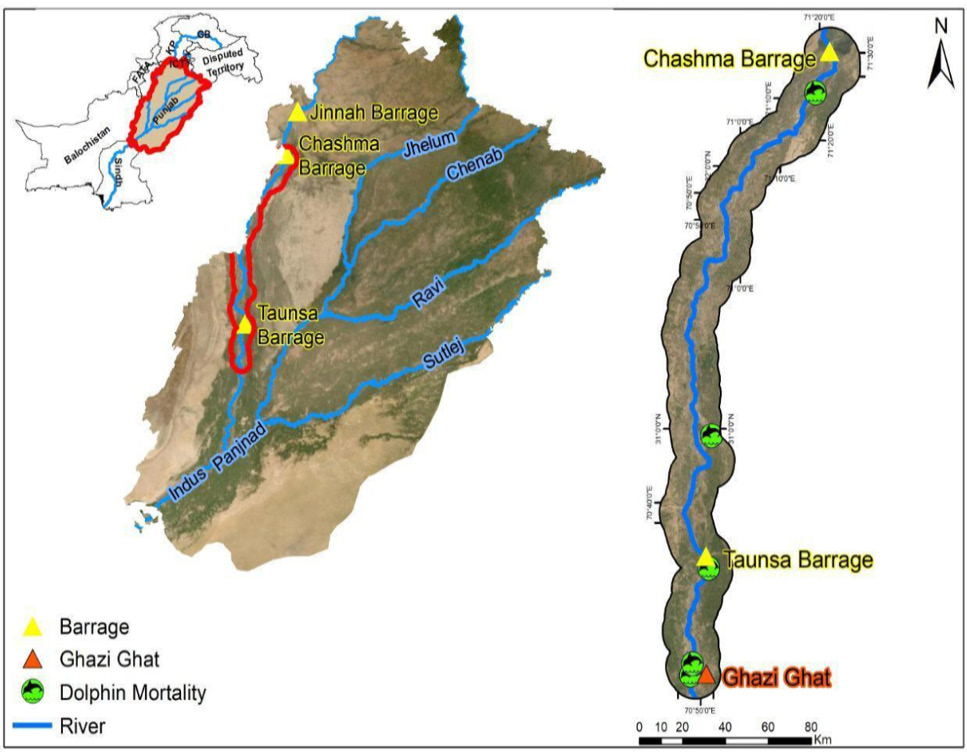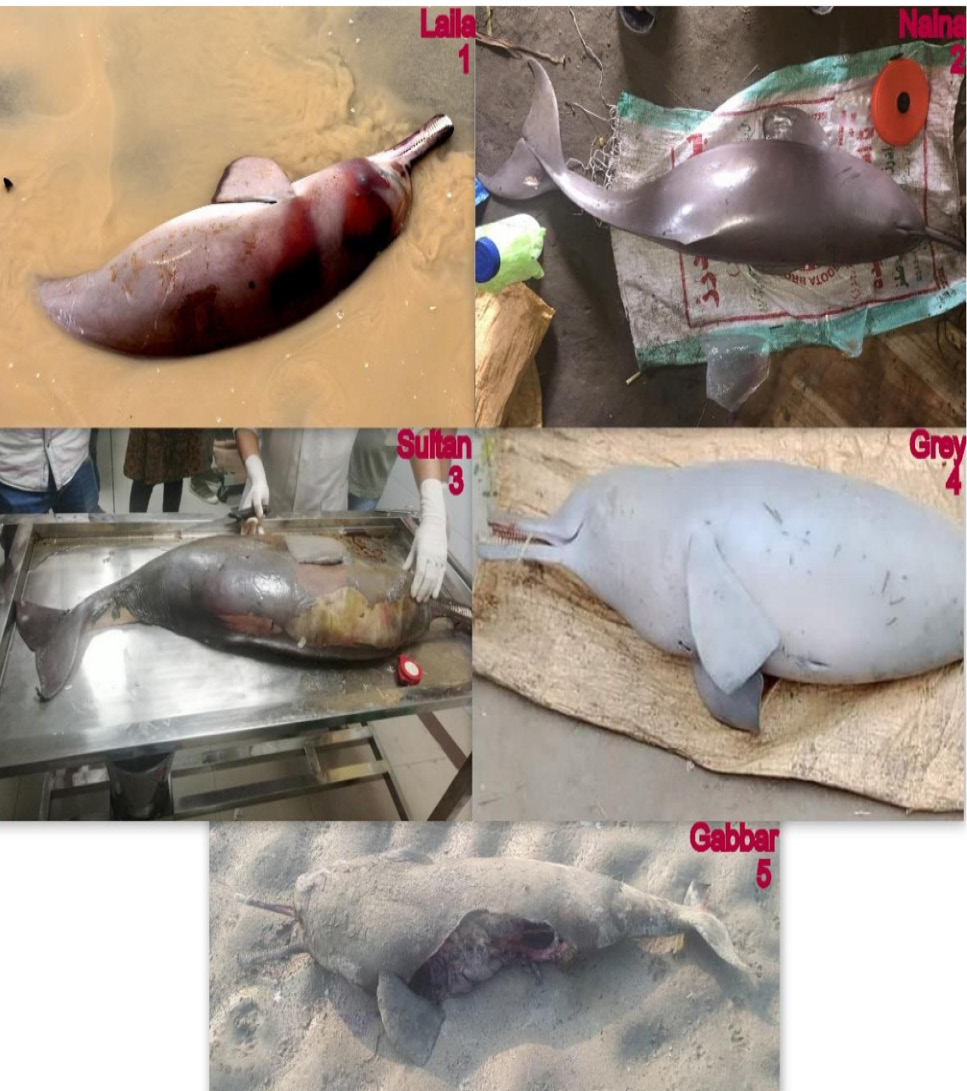Skin Marks on the Indus River Dolphin (Platanista minor) and their Implications for Conservation
Skin Marks on the Indus River Dolphin (Platanista minor) and their Implications for Conservation
Aamir Ibrahim1, Bingyao Chen1, Hassan Ali2, Imran Ali3, Yang Cao1 and Guang Yang1*
Study area covered from just downstream of Taunsa barrage (District, Muzaffar garh, Tehsil, Kot Addu) to near Samina Ghazi Ghat (District Dera Ghazi Khan), Punjab.
Seven different types of skin marks on the body of Indus River dolphins. Photographs show majority of the dolphins have more than one type of skin marks on their bodies.
Sighting of Indus River dolphins of groups in the study area.
Mortality of five dolphins in the area between C-T and T-G barrage.
Side slapping behavior of Indus dolphin.
Carcasses of Indus river dolphins from two subpopulations in Punjab.
















